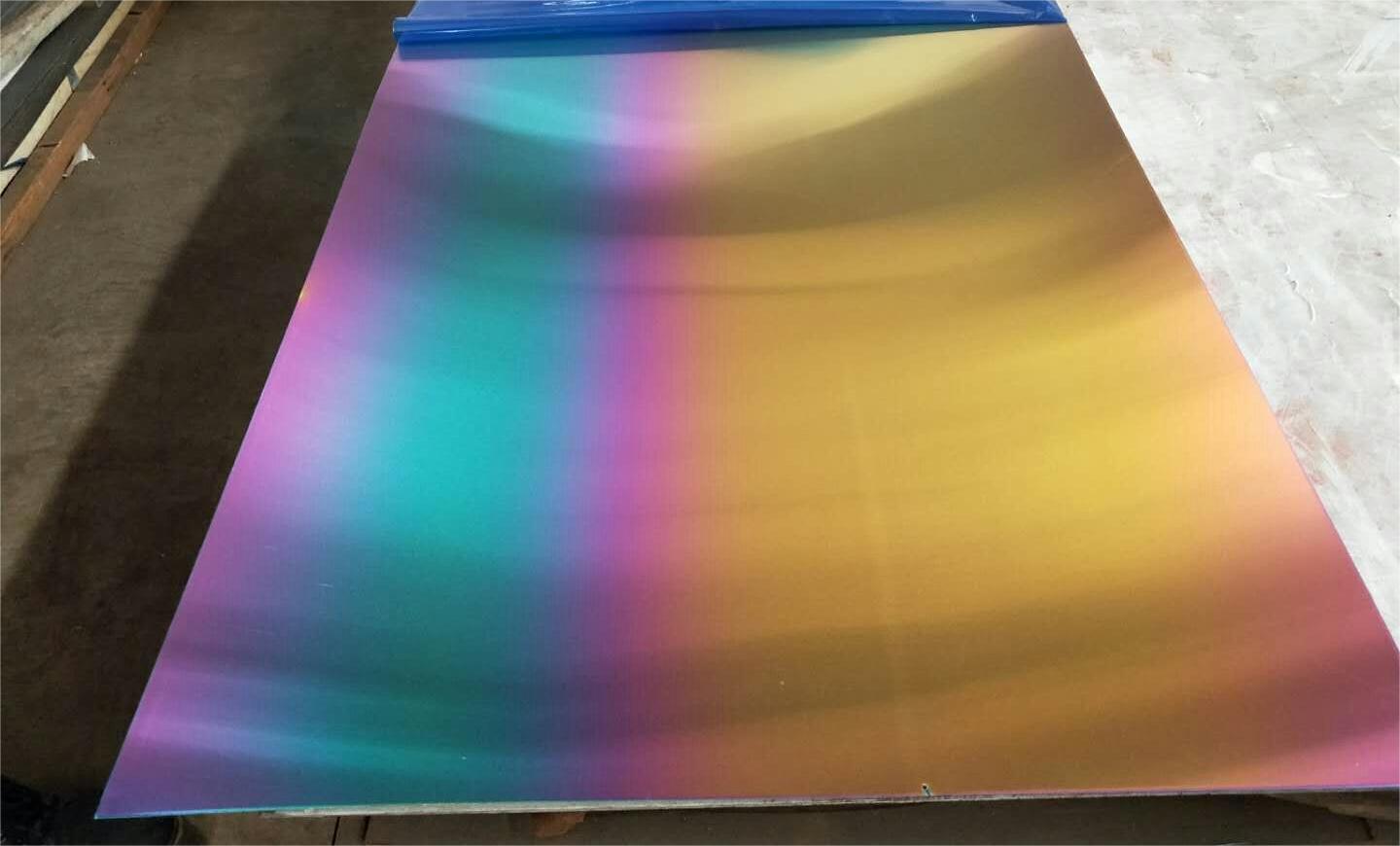Regarding the coloring of the surface of the stainless steel plate, it is not to form a colored surface covering layer, but to show various colors after being oxidized by the acidic chemical coloring solution on the surface. The principle is that the colorless and transparent oxide film formed on the surface of the stainless steel plate will Under the action of light, it exhibits interference colors.
Before the coloring process, the surface of the stainless steel plate should be treated, first of all, polishing. There are mainly mechanical polishing, chemical polishing or electrolytic polishing. Keep the surface finish of the board consistent, without chromatic aberration, and it is best to achieve a mirror finish, so that the most vivid and uniform colors can be obtained.
After mechanical polishing, the coloring treatment should be carried out immediately. If it is left in the air for a period of time after polishing, a layer of oxide film with a thickness of 1-10nm will be formed on the surface. Its structure is different from the coloring film, and it is not easy to remove in the coloring solution. , thereby affecting the formation of the colored film, resulting in prolonged coloring time, and the resulting color becomes darker and darker. Electrolytic polishing will form a passivation film on the surface of stainless steel. If the passivation film is not removed, the coloring rate will slow down. However, electropolishing can form a uniform and flat surface, making the color bright and improving the uniformity.

The second is to activate. As long as the factors that can activate the surface of the stainless steel substrate will accelerate the coloring process, all naturally formed oxide films that are invisible to the naked eye are the enemy of coloring and affect the success of the coloring, so they must be removed before coloring. In order to eliminate the passivation film on the surface of stainless steel and obtain a fresh surface, the degree of activation should be just right, preferably 10-15 seconds after the appearance of small bubbles. If the activation is insufficient, the development potential time of the coloring is prolonged. If the activation is excessive, the surface will be over-corroded, making the colored film dull. The strong acid corrosion method used for activation will lead to surface corrosion and activation, which will affect the brightness of the color after coloring. Satisfactory results can be obtained using electrolytic activation, chemical activation or anodic treatment.
Let's look at the influence of the uniformity of the coloring liquid on the coloring of the stainless steel plate. The electrochemical properties of various stainless steels are inconsistent, the temperature fluctuation of the coloring liquid, the change of the mass concentration of the coloring liquid, the length of coloring time, all such inhomogeneities will affect the color of the coloring, especially the slight change of temperature and time, The color changes accordingly. The inhomogeneity of the composition and temperature of the coloring liquid is due to the change of the temperature and composition of the coloring liquid as the coloring progresses. To make the composition uniform, it is necessary to adjust and replenish the coloring liquid composition in time. To make the temperature uniform, the heating elements should be arranged so that the heating is uniform, and the stirring should be strengthened to make the solution convective. Studies have shown that the color of the colored film made by stirring is obviously better than that of the colored film without stirring.
The surface coloring film formed after chemical treatment will have many microscopic pores, the film is also loose and not firm, and it is very easy to be worn, so post-treatment must be done. Post-treatment is to fill the pores of the oxide film and strengthen the oxide film layer to enhance the wear resistance and corrosion resistance of the film.